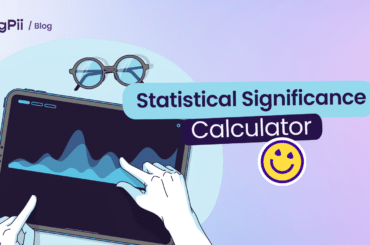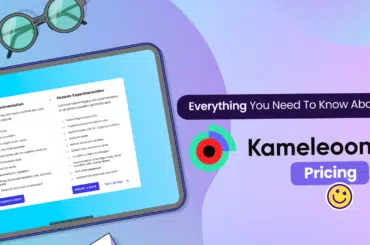VWO is a versatile optimization platform that helps businesses enhance their websites and improve conversions. It offers customers a suite of behavior analytics tools like heatmaps, surveys, forms, funnels, session recordings, and segments to optimize the user experience of your site, mobile app, and landing pages.
It’s also popular for its web experimentation features like the ability to run A/B tests, multivariate testing, split URL tests, and more.
However, the digital landscape is vast, and businesses often seek alternatives to VWO that can offer unique features, functionalities, and pricing models. These alternatives come in various forms, catering to different needs and objectives.
Here are the most common reasons you may seek alternatives to VWO:
- Diverse optimization needs: While VWO is a robust platform, you may have specific optimization requirements better served by alternative tools.
- Pricing considerations: VWO starts from a whopping $357 per month. This pricing structure may not align with the budgetary constraints of all businesses. Some businesses, particularly smaller ones, may find the cost of VWO prohibitive and seek alternatives that offer comparable functionalities at a more affordable price point.
- Unique features and workflows: Some CRO experts might look for capabilities unavailable in VWO, like AI-powered insights, advanced segmentation options, or integrations with other marketing and analytics tools.
- Compatibility with existing tech stack: Businesses may already have marketing and analytics tools and prefer VWO alternatives that seamlessly integrate with their existing tech stack.
Let’s delve into some prominent VWO alternatives based on the above analysis. This article will highlight their unique features, compare them to VWO, and discuss their key functionalities and workflows. Since Google Optimize is getting discontinued, this list will also work out as “Google Optimize alternatives.”
Top 8 VWO Alternatives
Here are the best alternatives to VWO based on their features, ease of use, and pricing structure.
1. FigPii
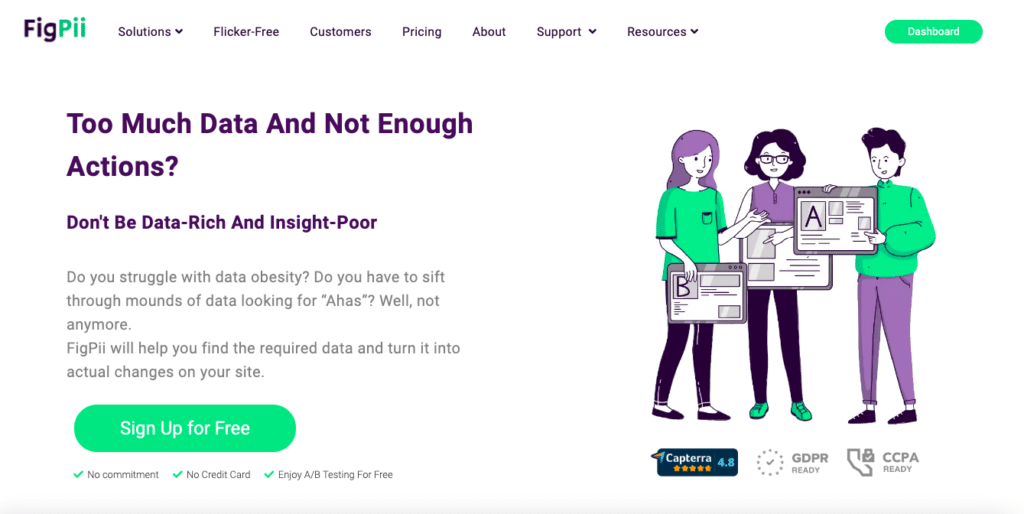
FigPii is an all-in-one conversion optimization platform that helps you understand what users do, why, and how to improve your site. It offers four tools: AB Testing, Heatmaps, Video Recording, and Polls.
Aside from these common optimization tools, FigPii offers two unique features: Site goals and FigPii Recommendations.
FigPii Recommendations are AI-powered suggestions that FigPii generates based on your site data and user behavior. FigPii also analyzes your heatmaps, recordings, polls, and experiments to identify the areas of improvement on the web page on your site.

The fact that you get every conversion optimization feature under one umbrella is another plus point. This means you won’t have to shuttle between multiple tools at once to maximize conversions.
FigPii is also designed to be easy to use, fast, and frictionless for both marketing and product teams.
One key aspect that sets FigPii apart is its fuss-free and intuitive user interface. It allows marketers and website owners to quickly set up experiments, create personalized experiences, and track the results without extensive technical expertise.
Another notable feature of FigPii is its advanced targeting options. Users can target experiments and personalized experiences based on specific criteria like traffic sources, device types, or even IP targeting. This level of granular targeting helps you deliver the right content to the right audience.
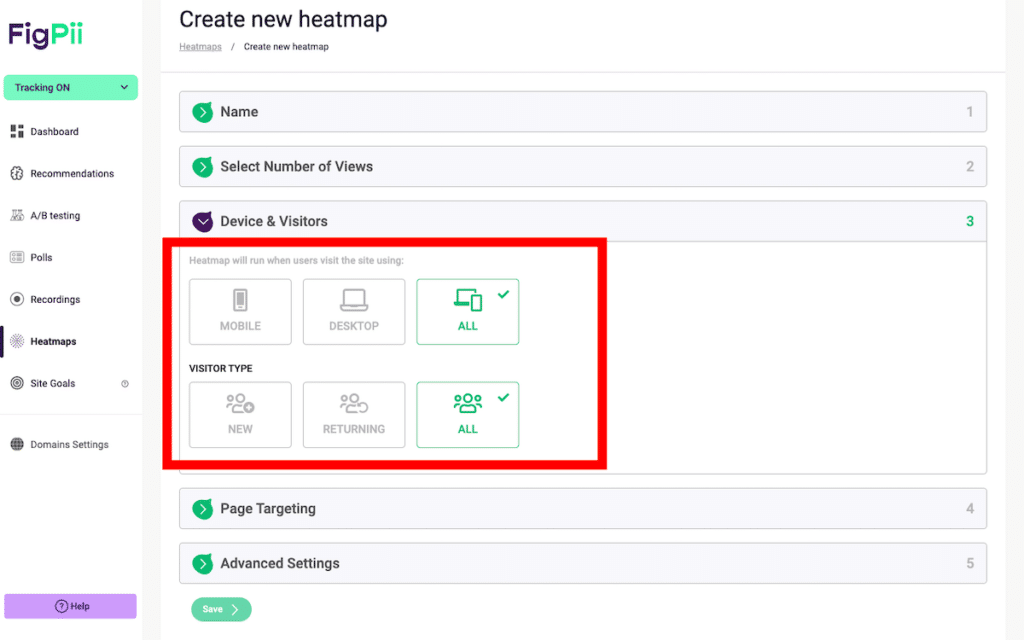
Other than this, some key differences between FigPii and VWO are:
- FigPii has a simpler interface than VWO.
- FigPii has minimal impact on your site load time, while VWO requires multiple snippets of code for different products.
- FigPii has a more affordable pricing plan than VWO, starting from $99 per month for up to 30,000 visitors. VWO is much more expensive, starting from $357 monthly for up to 50,000 visitors.
- FigPii has a flicker-free technology that prevents the original page from showing before the variation is loaded, while VWO does not.
Pros:
- FigPii is an all-in-one conversion rate optimization tool that helps you understand your users’ behavior on your site and improve their experience.
- FigPii has a recommendations feature that analyzes your website data and suggests possible improvements based on best practices and industry benchmarks.
- FigPii has a responsive support team available via chat in the web app.
- It comes with a free-forever plan.
Cons:
- FigPii does not have an element list feature that shows you a list of all the elements clicked on your website.
- The freemium plan lacks most features and only lets you run A/B tests.
Pricing:
FigPii’s paid plans start from $99.9 monthly for up to 30k users. It also has a free tester plan for A/B testing for up to 75000 monthly visitors.
2. Optimizely
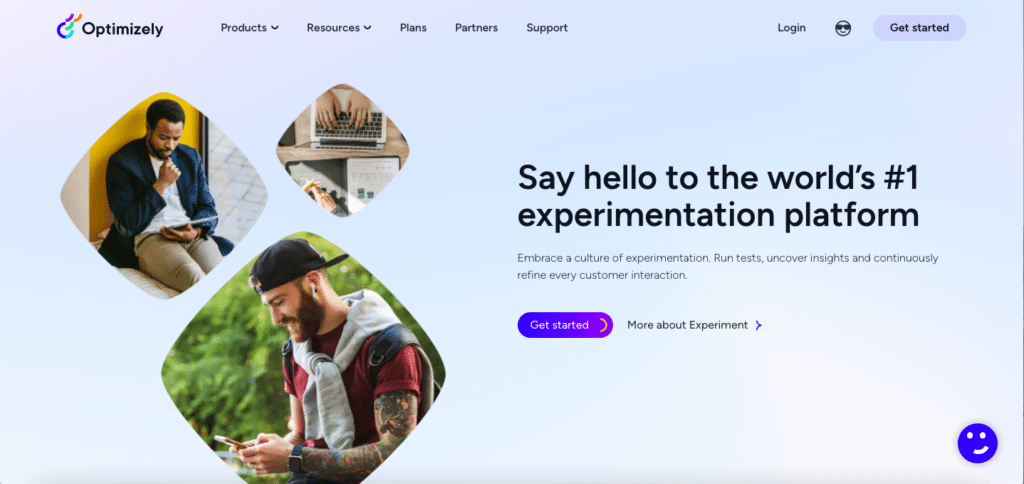
Optimizely is a prominent A/B testing and experimentation platform that serves as a strong alternative to VWO. It offers a wide range of features, including content management, experimentation, personalization platform, and commerce, to help you optimize websites, apps, and other digital channels.
Here’s a quick overview of Optimizely’s three major workflows:
- Content Marketing Platform: It allows you to plan campaigns, create content, and collaborate across teams using a content management system, a digital asset management system, and content recommendations.
- Experimentation Platform: It helps you run tests, uncover insights, and refine customer interaction using web experimentation, feature experimentation, advanced personalization, and program management.
- Commerce Platform: This includes customized commerce, configured commerce, product information management, and product recommendations.
You can easily create experiments to compare different variations of your website or measure the impact on key performance indicators like conversions, engagement, or revenue.
The platform provides a visual WYSIWYG (what you see is what you get) editor that enables non-technical users to change their digital properties without coding skills.

One aspect of Optimizely is its seamless integration with other digital marketing tools. It provides extensive integrations with various platforms, including customer relationship management (CRM) systems, analytics tools, and content management systems (CMS).
This comes in handy if you want to use your existing technology stack and incorporate Optimizely into your optimization strategies.
Some of the differences between Optimizely and VWO include:
- Optimizely is a digital experience platform that covers content management, experimentation, personalization, and commerce. VWO mainly focuses on website optimization and does not offer content management or commerce features.
- Optimizely’s pricing structure is a bit complicated as compared to VWO’s.
- VWO has an element list feature that shows users a list of all the elements clicked on their website. Optimizely lacks conversion optimization features like heatmaps, session recordings, and on-site surveys.
Pros:
- Optimizely offers extensive integration options with major marketing tools, analytics platforms, CMS, and CRM systems.
- A user-friendly interface and a visual editor.
- Suitable for even enterprise-level businesses, with features and capabilities that support large-scale experimentation and optimization efforts.
Cons:
- While Optimizely provides a user-friendly interface, it might still take time for you to get familiar with the platform.
- Optimizely’s native analytics and reporting capabilities are not as extensive as those offered by standalone analytics tools.
Pricing:
Contact Optimizely’s sales team or visit their official website to request a quote for your requirements.
3. AB Tasty
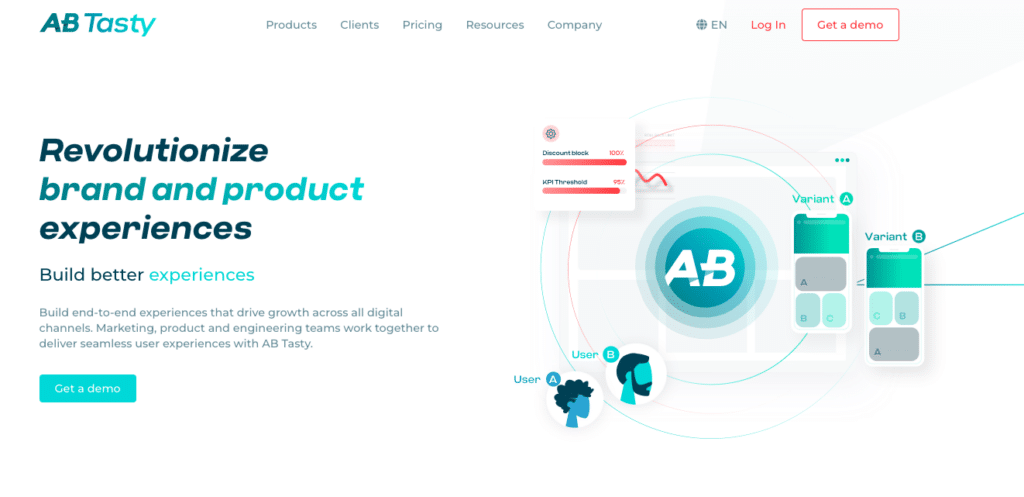
AB Tasty is a customer experience optimization and feature management company that provides software as a service for experimentation, personalization, and feature flagging.
In terms of experimentation features, AB Tasty lets you run A/B tests, multivariate tests, split tests, and multipage tests across web, mobile, and server-side applications. The platform also provides AI-powered segmentation that uses machine learning to automatically identify and target the most relevant audiences for each test or campaign.
It’s also a low-code/no-code approach to experimentation and personalization, allowing you to create and launch tests and campaigns without technical skills.
Another unique feature is “feature flagging,” which helps you remotely control the release of new features and functionalities, reducing risk and increasing agility. Users can use flags to enable or disable features, roll out features gradually, target specific audiences, and run experiments on features.
Some of the major differences between AB Tasty and VWO include:
- AB Tasty offers additional customer experience optimization and feature management features like experimentation, personalization, and feature flagging.
- A/B Tasty doesn’t offer conversion optimization features like VWO (heatmaps, session recordings, on-site surveys).
- AB Tasty has an AI-powered segmentation feature that uses machine learning to automatically identify and target the most relevant audiences for each test or campaign. VWO doesn’t have an AI-powered segmentation feature but offers a smart decision feature that uses machine learning to suggest winning variations.
Pros:
- Great customer support. Some users also claim that the developers at AB Tasty are quick to provide support.
- It’s fairly easy to use.
Cons:
- The pricing structure is not readily available on its official site.
- It has a steep learning curve for some of its advanced features, including feature flagging and AI-powered segmentation.
Pricing:
Custom pricing plans.
4. Crazy Egg
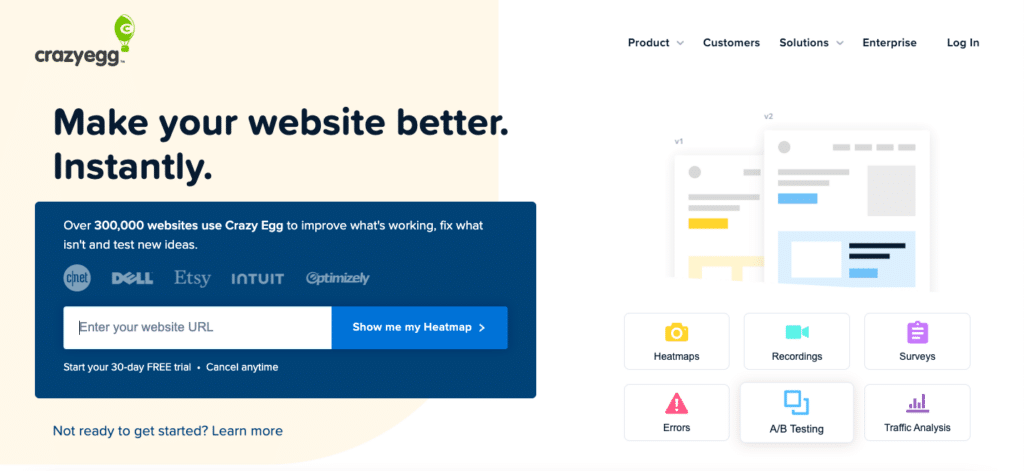
Crazy Egg is a website optimization software that comes with heatmaps, recordings, surveys, and A/B testing. It helps users understand how their visitors interact with their website and improve their user experience and conversion rate.
Aside from the regular heatmaps that show where visitors click, scroll, move, and hover on the website, it also has a confetti feature. The confetti map shows individual clicks and segments them by source, device, behavior, etc.

Major differences between Crazy Egg and VWO include:
- Crazy Egg focuses more on heatmaps and offers more types and features than VWO. Crazy Egg has click maps, scroll maps, move maps, overlay reports, confetti reports, list reports, and element reports. VWO has click maps, scroll maps, and element list reports.
- Crazy Egg has a lower price than VWO. Crazy Egg’s pricing plans start from $29 monthly for up to 30,000 tracked pageviews and 100 recordings. VWO’s pricing plans start from $357 per month for up to 50k users.
- Crazy Egg has a minimalistic dashboard, while VWO has a more comprehensive dashboard offering more features.
- VWO has an AI-based personalization feature, while Crazy Egg doesn’t have any such feature.
Pros:
- Crazy Egg is easy to use and install, with a 30-day free trial and no coding required.
Cons:
- Crazy Egg may slow down your site loading speed if you have too many active tests or snapshots running simultaneously.
- Crazy Egg does not provide live chat support or phone support. You have to rely on help articles for assistance.
Pricing:
Plans start from $29 monthly for up to 30k tracked pageviews, 100 recordings, and 25 snapshots. Each plan comes with a 30-day free trial.
5. Smartlook
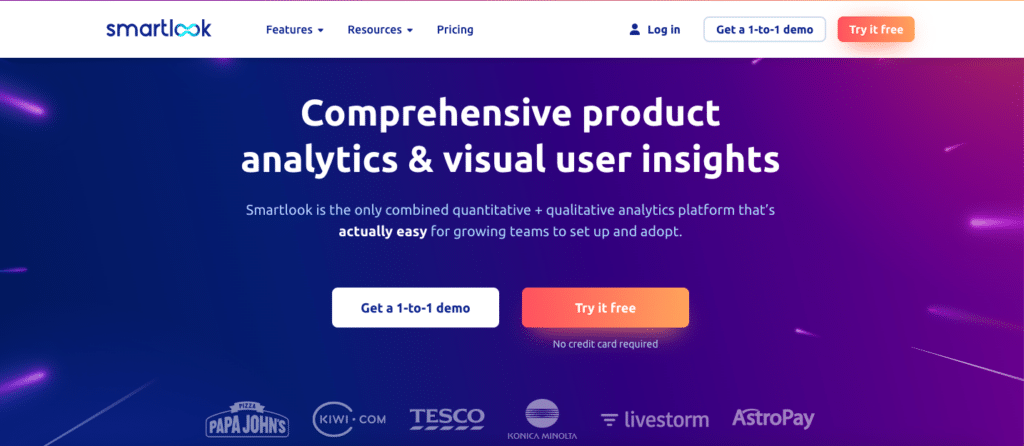
Smartlook is a product analytics and visual user insights platform that helps you simultaneously optimize your website, mobile app, and even mobile and web.
The tool combines both quantitative and qualitative data to give you a complete picture of how your users behave and what they want. Some of its key features include session recordings, events, funnels, heatmaps, behavior flows, crash reports, and DevTools.
In addition to session recordings, Smartlook also helps you determine the cause of a crash and fix it without QA reproduction. You can see what happened and which crashes frustrate users most.
The unique “Events” feature helps you track your visitors’ actions on your site. Common events include visited URL events, clicked-on text events, typed text events, clicked-on elements events, and other event tracking elements.

Smartlook also offers retroactive insights, cross-platform analytics, and 50+ integrations, making it stand out from other tools.
Here is a quick list of differences between Smartlook and VWO:
- Smartlook is a combined quantitative + qualitative analytics platform, while VWO is mainly a conversion optimization platform.
- Smartlook has a simpler and more user-friendly interface than VWO, which can overwhelm some users.
- Smartlook has more advanced filtering options for recordings and events than VWO, allowing precise analysis of user behavior.
- Smartlook doesn’t offer the A/B testing function, while VWO is a major A/B testing platform.
Pros:
- Smartlook offers conversion funnels, helping you track user journeys and identify drop-off points.
- It can automatically track user actions, including button clicks, form submissions, and page scrolls.
Cons:
- Smartlook only allows 5000 monthly sessions for $55 per month. Even the heat maps, events, and recordings are limited, making them pricier than their counterparts.
- Doesn’t offer an A/B testing function.
Pricing:
Starts from $55 per month for up to 5000 sessions, 30 heat maps, 20 events, and five funnels. There’s also a free trial for up to 3000 sessions.
6. Fullstory
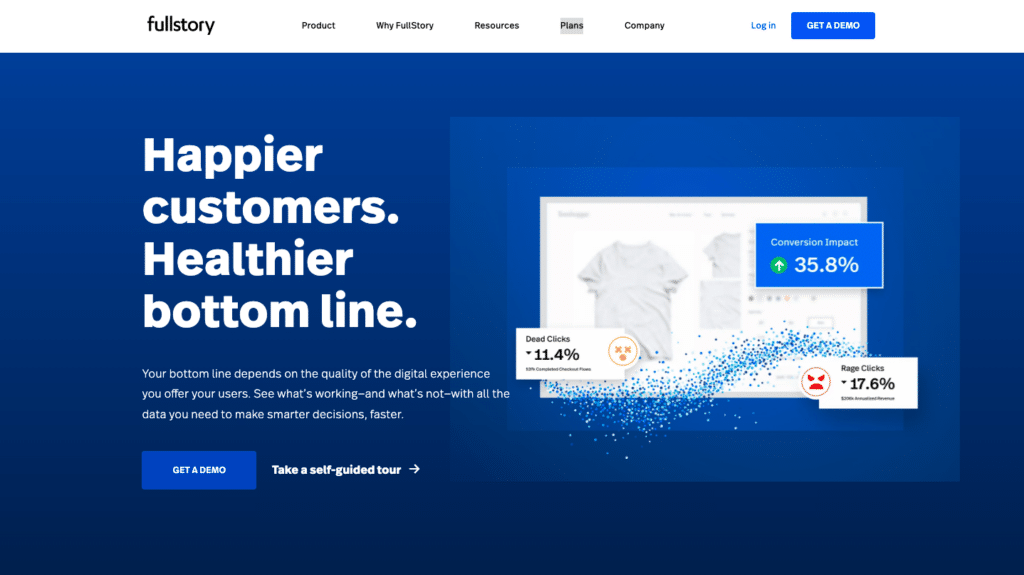
Fullstory is a digital experience intelligence platform that helps you improve your website visitor’s digital experience.
Some of its key features include heatmaps, session recordings, the ability to determine frustration signals, and more.
With its “funnels & conversions” feature, you can see how users move through your website or app and where they drop off. It also lets you analyze conversion rates and identify friction points and opportunities for improvement.
Then they have the “journey map” feature that helps you connect your journey map data to real user experiences with Fullstory’s Digital Experience Intelligence (DXI) tools. These tools help you see the challenges and opportunities you need to optimize the user experience.

Fullstory also uses a proprietary auto-capture technology that records everything on your website or app without any manual tagging or coding.
Here is a quick list of differences between Fullstory and VWO:
- Fullstory is a digital experience intelligence platform, while VWO is mainly a conversion optimization platform.
- Fullstory has a more comprehensive and accurate data capture than VWO, which relies on manual tagging and may miss some user interactions.
- Fullstory has a more powerful and flexible search and segmentation engine than VWO.
- Fullstory doesn’t offer an A/B testing feature, while VWO does.
Pros:
- You can export your Fullstory data to your data warehouse or other tools for further data analysis. It lets you integrate with over 40 tools like Google Analytics, Amplitude, Mixpanel, and more.
- Fullstory offers advanced search and segmentation options.
Cons:
- Fullstory offers a wide range of features, making the learning curve slightly steeper than simpler optimization tools.
- FullStory’s pricing is perceived as higher compared to some other optimization tools.
Pricing:
Quote-based pricing plans.
7. Contentsquare
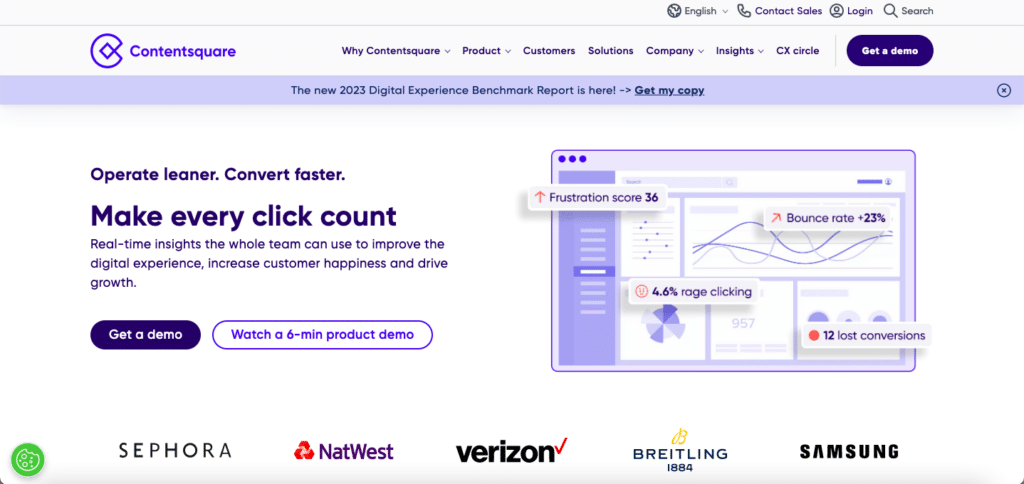
Contentsquare is a digital experience platform (DXP) that claims to analyze billions of digital behaviors to provide metrics, visualizations, and recommendations for optimization.
Contentsquare’s key features include session replay, heatmaps, funnels, events, customer journey analysis, form analytics, and more.
What makes it unique is its zone-based heatmap function. These heatmaps not only show you where visitors are clicking, moving, and scrolling but also give an aggregated revenue and conversion rate of each page element.
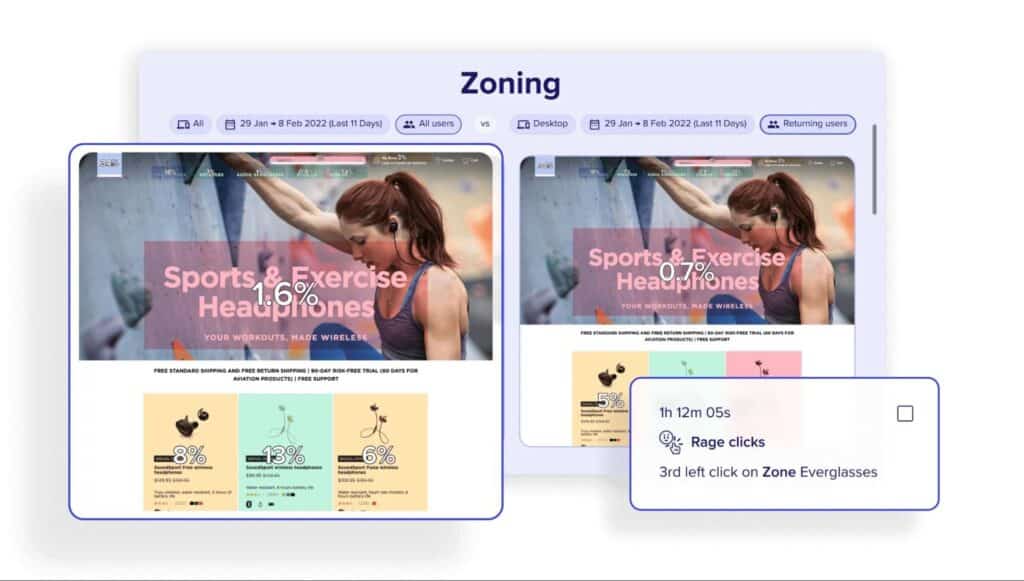
Coming to the A/B tests, they allow you to run a side-by-side analysis to see which version performs better and why.
Here’s a quick list of differences between VWO and Contentsquare:
- Contentsquare offers zone-based heat maps, while VWO offers regular heat maps.
- Contentsquare offers integrations with various marketing and analytics tools to complement its behavioral analytics. VWO also integrates with popular tools but may have a different range of native integrations.
Pros:
- Contentsquare provides a wide range of analytics features, including user journeys, heatmaps, form analytics, and segmentation, providing a holistic view of user behavior.
- They have zone-based heatmaps that pinpoint conversion rates, frustration scores, etc., of elements, which reduces the guesswork from the conversion optimization process.
Cons:
- Higher price point than many of its counterparts.
- The pricing isn’t readily available on their site – you’ll have to contact their sales team.
- All the digital experience analytics features might be overkill for small and mid-sized businesses.
Pricing:
Quote-based pricing plans.
8. Hotjar
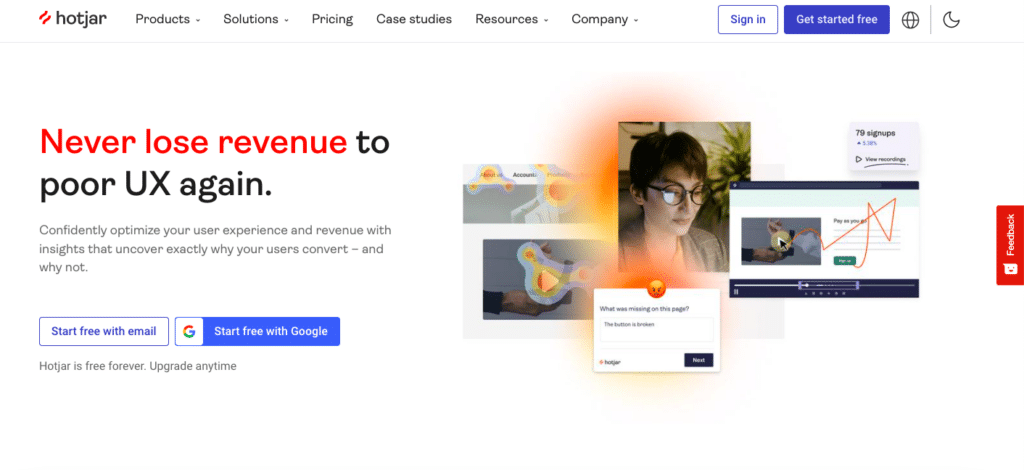
Hotjar is one of the biggest names in the conversion optimization market. It helps you capture qualitative data using heatmaps, recordings, surveys, and interviews. You can use these insights to identify usability issues, optimize conversion funnels, and collect feedback from your visitors. For a deeper analysis, you can filter and segment your data based on device type, browser, location, etc..
Hotjar also has a simple and intuitive interface that lets you set up and launch experiments quickly.
One of Hotjar’s standout features is the 1:1 interview option that allows you to invite users to have a live chat or video call with you and understand their needs and pain points.

Here’s a quick list of differences between VWO and Hotjar:
- Hotjar has surveys and interviews, while VWO does not.
- VWO has program management and data management features, while Hotjar does not.
- Hotjar has a simpler and more intuitive interface, while VWO has a more complex and powerful interface.
Pros:
- Hotjar offers a freemium plan.
- It’s a prominent name in the industry.
- It’s easy to use and implement.
Cons:
- The pricing structure is a bit complicated – there are different pricing tiers for different conversion optimization features.
- It doesn’t come with A/B testing functionality.
Pricing:
Paid plans start from $32 monthly for up to 100 daily sessions. However, this plan is only limited to Hotjar’s heat maps and recordings. There are different plans for other optimization features like feedback, user interviews, and surveys. It also has a freemium plan.
Optimization Showdown!
The world of website optimization offers a range of alternatives to VWO, each catering to specific needs and preferences.
Let’s recap some of the key alternatives mentioned and their standout features:
Optimizely is an excellent choice for businesses seeking a robust A/B testing platform with advanced targeting capabilities and integrations with other tools.
AB Tasty stands out with its user-friendly interface, comprehensive testing options, and advanced personalization features, making it suitable for businesses focused on optimizing user experiences.
Crazy Egg’s unique combination of heatmaps, scroll maps, and user recordings provides valuable visual insights for businesses looking to understand user behavior, increase conversions, and improve website usability.
Smartlook offers powerful session replay and funnel analysis features, making it an ideal choice for businesses that prioritize an in-depth understanding of user interactions and behavior.
Fullstory stands out with its advanced session replay capabilities, user segmentation options, and integrations, making it a suitable choice for businesses seeking comprehensive user behavior analysis and optimization.
Contentsquare’s AI-driven insights, behavioral analysis, and advanced user journey mapping make it a strong contender for businesses aiming to deeply understand user behavior and enhance their digital experiences.
Hotjar’s suite of heatmaps, session recordings, and user feedback tools provides a holistic view of all user engagement and user interactions and aids in optimizing user experiences based on visual data and direct feedback.
Finally, FigPii emerges as a top contender due to its unique combination of powerful A/B testing, heatmaps, session recording, personalization, and user feedback features. The fact that it’s easy to use and reasonably priced is also a bonus and makes it suitable for businesses of all sizes, especially small businesses.
Ultimately, choosing the best alternative to VWO depends on specific needs, budget considerations, and industry requirements.


